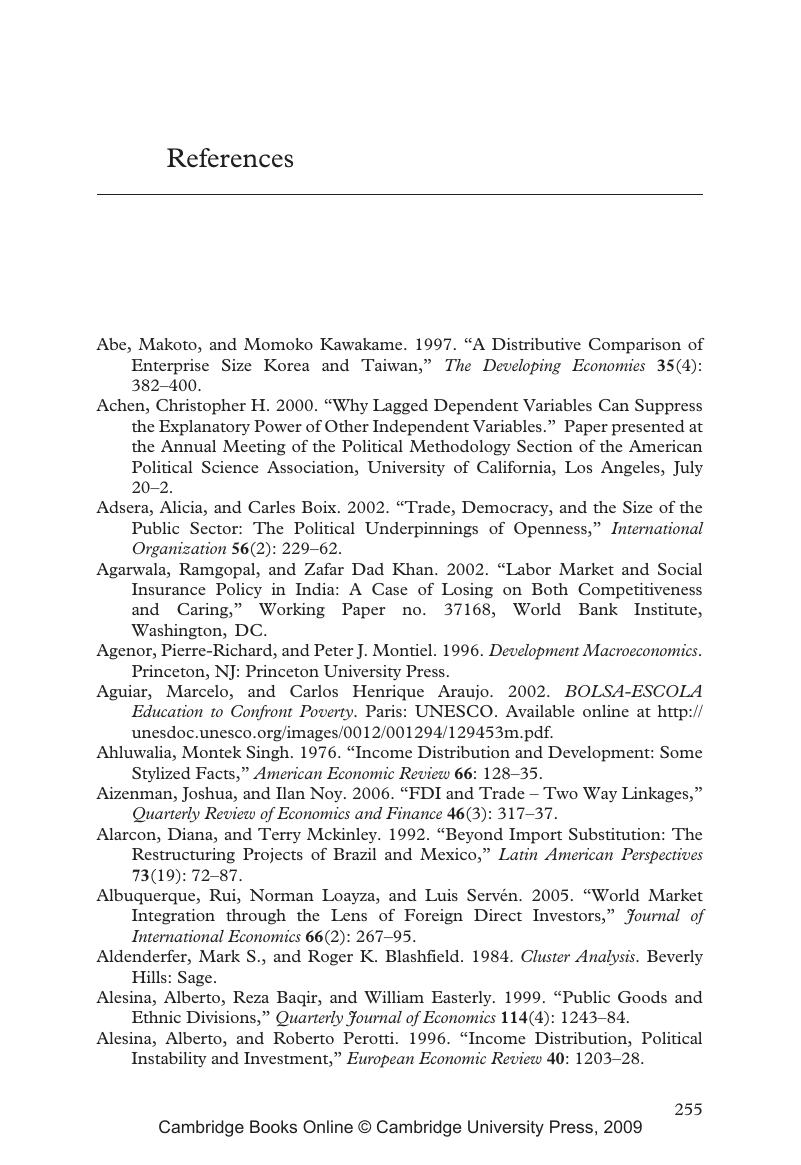Book contents
- Frontmatter
- Contents
- List of figures
- List of tables
- Preface
- 1 Introduction
- 2 The race to the bottom in developing countries
- 3 Who really gets hurt?
- 4 LDC welfare states: convergence? What are the implications?
- 5 Globalization and the protective welfare state: case study of India
- 6 Globalization and the productive welfare state: case study of South Korea
- 7 Globalization and the dual welfare state: case study of Brazil
- 8 Conclusions
- Appendix A LDC social spending
- Appendix B Assessing potential labor power
- Appendix C Additional tests for the RTB hypothesis
- Appendix D Variables in the inequality model
- Appendix E Technical notes on Gini coefficients
- Appendix F LDC Gini coefficient statistics
- Appendix G Robustness check
- Appendix H Conditional impact of trade on inequality
- Appendix I Descriptions and sources of variables
- Appendix J Cluster results minus outcome variables
- Appendix K Dendrogram for cluster analysis
- Appendix L Poverty tables
- Appendix M Social expenditures on social security, health, and education in India (percent of GDP) based on national data
- References
- Index
- References
References
Published online by Cambridge University Press: 22 September 2009
- Frontmatter
- Contents
- List of figures
- List of tables
- Preface
- 1 Introduction
- 2 The race to the bottom in developing countries
- 3 Who really gets hurt?
- 4 LDC welfare states: convergence? What are the implications?
- 5 Globalization and the protective welfare state: case study of India
- 6 Globalization and the productive welfare state: case study of South Korea
- 7 Globalization and the dual welfare state: case study of Brazil
- 8 Conclusions
- Appendix A LDC social spending
- Appendix B Assessing potential labor power
- Appendix C Additional tests for the RTB hypothesis
- Appendix D Variables in the inequality model
- Appendix E Technical notes on Gini coefficients
- Appendix F LDC Gini coefficient statistics
- Appendix G Robustness check
- Appendix H Conditional impact of trade on inequality
- Appendix I Descriptions and sources of variables
- Appendix J Cluster results minus outcome variables
- Appendix K Dendrogram for cluster analysis
- Appendix L Poverty tables
- Appendix M Social expenditures on social security, health, and education in India (percent of GDP) based on national data
- References
- Index
- References
Summary

Information
- Type
- Chapter
- Information
- Globalization and the Race to the Bottom in Developing CountriesWho Really Gets Hurt?, pp. 255 - 285Publisher: Cambridge University PressPrint publication year: 2008
